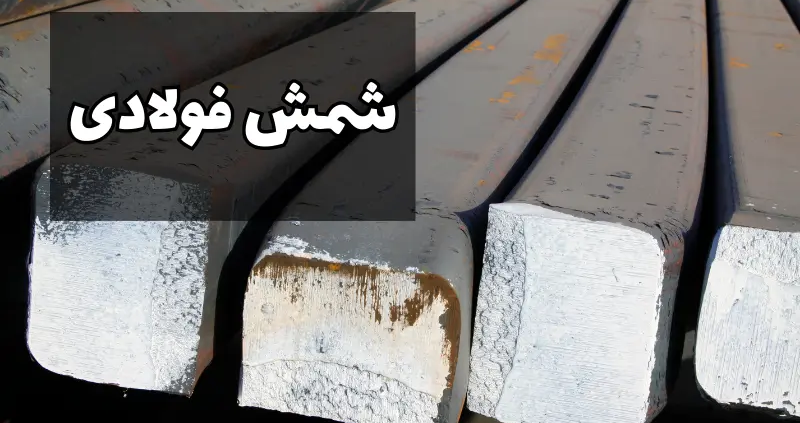
Steel ingot is the foundation of modern industry. This material, which is obtained by melting iron and combining it with carbon and other elements, is used in various structures and massive engineering projects including building construction, vehicle manufacturing, home appliances and many other products. In this article, we will take a detailed look at the steel ingot, its production process, different types and its applications in the industry.
Definition of steel ingot
Steel ingot is a primary product obtained from the steel production process and is shaped into various shapes such as cubes, rectangles or cylinders. These ingots are then used to produce finished steel products such as steel plates, bars, beams and other steel sections.
Steel ingot production process
The production of this product begins with the extraction of iron ore. After mining, iron ore is combined with coke and limestone in blast furnaces and melted at a very high temperature to obtain molten iron. Molten iron is then reprocessed in oxygen furnaces or electric arc furnaces to remove impurities and produce high-quality steel. Finally, the molten steel is poured into molds to form steel ingots.
Types of steel ingots
Steel ingots are divided into different types based on chemical composition and production method. Some of the most common types are:
- Carbon steel: It has different amounts of carbon and has wide applications in industry.
- Alloy steel: It is produced by adding elements such as chromium, nickel and molybdenum to carbon steel to add certain properties such as corrosion resistance.
- Stainless steel: A type of high corrosion resistance alloy steel used in acidic and alkaline environments.
The uses of this product
Steel ingots are used in a wide range of industries due to their unique properties and adaptability to different needs. Some of the most important applications are:
- construction: It is used as the main material in the manufacture of beams, columns and other building load components.
- Automotive industry: It is used in the production of car bodies, chassis, and other key metal parts.
- Manufacturing of machinery and equipment: Used for manufacturing industrial machinery, instrumentation and heavy equipment.
- Home appliances: It is used in the manufacture of stoves, refrigerators, washing machines and other household appliances.
Challenges and the Future of Steel Ingot
Despite the great importance of this product in the modern industry, there are also challenges in its production and use. One of the biggest challenges is the environmental impact of the steel production process. Today, there are many efforts to increase energy efficiency and reduce greenhouse gas emissions in the industry.
The future of steel bullion will be accompanied by technological innovations and efforts to adapt more to the environment. Using new technologies to optimize steel production and recycling processes can help conserve resources and reduce environmental impact.
Conclusion
Steel ingots, as one of the most important materials in modern industry, play a vital role in the development and development of societies. Despite environmental and technical challenges, promising technological advances have been made to improve production processes and reduce negative impacts on the environment. Continuing these efforts will ensure that the product remains a valuable and sustainable resource for future generations.
Read more: cast iron ingot
